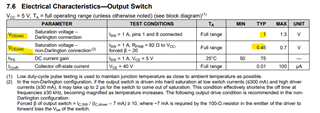Other Parts Discussed in Thread: MC33063A
Tool/software:
Hi.
I have a question about the MC33063A converter. We are using R2 = 18K and R1 = 11K, with a desired Vout of 3.3V; however, we are getting 3.59V when Vin is 24V. The capacitance Ct is set to 220pF. Do we need to change the value of Ct? I have been experimenting with different values for CT (300pf, 600pf, 1.1nf) using the PSPICE for TI model, but I cannot achieve a Vout of 3.3V.

Additionally, Vfb = 1.35V instead of 1.25V






